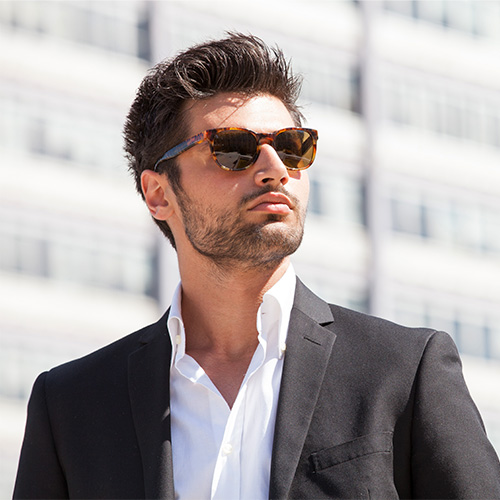
Eyeglasses have been around for hundreds of years, so it's natural to expect styles to change over the decades. If we look back over the last one hundred years of eyeglass fashion, we can see how some of the most classic and timeless shapes and designs came to be. Starting in the 1920’s, round tortoise shell frames became a popular choice for both men’s and women’s frames. During this era, the frames were made from real tortoise shells for its distinctive pattern and durability. Modern tortoise frames are made from plastic and acetate, but the telltale pattern remains. Round tortoise frames were so popular, in fact, that they carried over into the 1930’s and 40’s as one of the most sought after styles.
From the late 1940’s into the 50’s, the unisex designs that dominated the market started to lose ground to more distinctive men’s and women’s styles. This decade saw the introduction of the classic clubmaster styles for men; a frame that combined a metal frame with plastic accents along the brow. The heavy top of the clubmaster style gave a more defined and masculine look. Womens styles adopted the cat-eye shape, which became one of the most recognizable shapes of the century. Worn by celebrities like Marilyn Monroe and Audrey Hepburn, the cat-eye has stood the test of time as women's staple. The 1950s also saw the introduction of the RayBan Wayfarer, which is still one of the most popular choices for frames today. Though it is available in a variety of colors today, the style itself has changed very little since its release and has become synonymous with sunglasses as a whole.
The 1960’s and 70’s ushered in an era of varied colors and styles. Shapes became more geometric and oversized frames became popular for both men and women. The aviator style, designed for pilots in the 1930’s, became a common unisex choice for sunglasses and ophthalmic glasses alike. Fashion tints on prescription lenses were also common in blues and beiges and pinks, and were worn by celebrities like John Lennon. With more varied shapes and colors to combine, these decades made eyewear not only a medical device, but a fashion statement and means of self expression.











